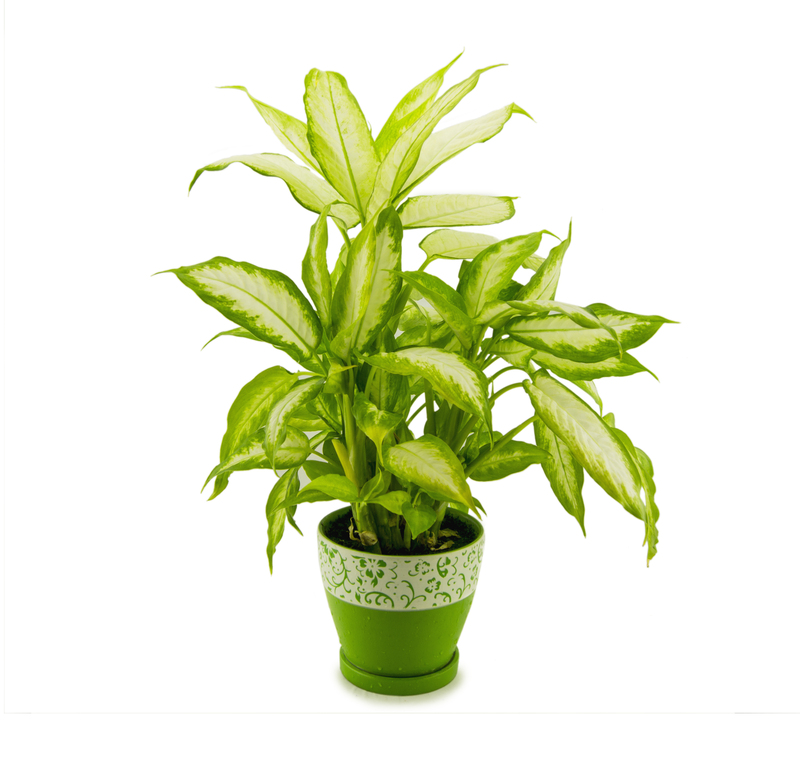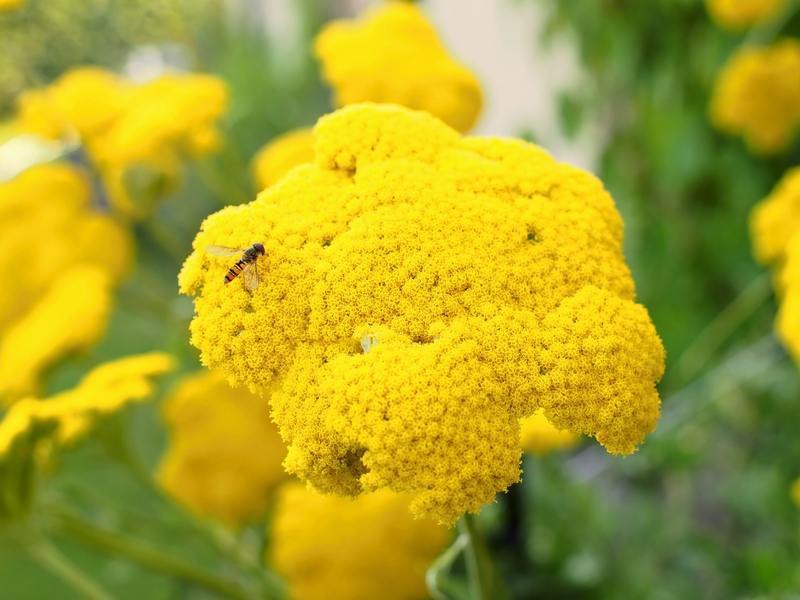Orchid Care: A Botanical Journey
Posted on 09/09/2025
Orchid Care: A Botanical Journey
Orchids have enchanted plant enthusiasts for centuries with their breathtaking beauty, unique blooms, and captivating stories. Whether you are a beginner, an intermediate grower, or a seasoned orchid collector, understanding the essentials of orchid care will open the door to a flourishing and rewarding botanical adventure. In this guide, we will unravel the mysteries of orchid growing, explore tried-and-tested techniques, and offer insights for overcoming common challenges. Embark with us on a botanical journey dedicated to the art and science of nurturing healthy, vibrant orchids.
The Allure of Orchids: A Brief History
Orchids belong to the family Orchidaceae, one of the largest and most diverse plant families in the world, featuring over 25,000 species and more than 100,000 hybrids. From tropical rainforests to temperate zones, their adaptability is legendary. Cultures across the globe have revered orchids for their medicinal, ornamental, and symbolic value--making them a centerpiece in botanical collections.
Key Highlights of Orchid History
- Ancient China: Orchids symbolized refinement and purity.
- Victorian England: The "Orchid Fever" era intensified the collection and hybridization of rare species.
- Modern Usage: Ornamental, therapeutic, and even culinary uses, especially with genera like Vanilla.

Understanding Orchids: Anatomy and Growth Habits
Success in orchid care starts with recognizing their unique anatomy and a variety of growth patterns:
Anatomy of an Orchid
- Roots: Often aerial, equipped with a velamen layer to absorb moisture and nutrients from the air.
- Leaves: Waxy and robust, designed to retain water.
- Pseudobulbs: Swollen stems in some varieties that store water and nutrients.
- Flowers: Known for their bilateral symmetry and a unique lip (labellum) designed for pollinators.
Types of Orchids
- Epiphytic orchids: Grow on trees, absorbing moisture from the air (e.g., Phalaenopsis, Cattleya).
- Terrestrial orchids: Grow in soil or leaf litter (e.g., Cymbidium).
- Lithophytic orchids: Thrive on rocks and rocky terrain.
Choosing the Right Orchid for Your Home
With thousands of species and hybrids, selecting the right one can be daunting. Focus on orchid care essentials and species suited for beginners:
Best Orchids for Beginners
- Phalaenopsis (Moth Orchid): Blooms last for months and adapt well to home environments.
- Cattleya: Known for their fragrant, showy flowers.
- Dendrobium: Highly resilient with beautiful, varied blooms.
- Cymbidium: Cool-growing and robust, ideal for those with space and cooler climates.
Essential Orchid Care: Lighting, Watering, and Humidity
Proper care is pivotal in your orchid growing journey. Master these essential elements:
Lighting Requirements for Orchids
- Bright, indirect light is preferred for most species.
- East or south-facing windows are usually ideal.
- Leaf color cues: Healthy green leaves indicate optimal lighting; too dark suggests low light, reddish tinge means too much sun.
- Use grow lights for spaces lacking natural sunlight.
Watering Orchids Correctly
- Avoid overwatering: Orchids are susceptible to root rot. Let the medium dry before rewatering.
- Water type: Use tepid, distilled, or rainwater when possible.
- Morning is best: Water early so leaves dry before night, reducing fungus risk.
- Misting: Can help maintain humidity but avoid pooling water in the crown.
Humidity for Healthy Orchids
Most orchids thrive in 40-70% humidity:
- Use humidity trays filled with water and pebbles beneath pots.
- Group plants together to create a microclimate.
- Consider a small room humidifier for dry environments.
Best Orchid Potting Mediums and Repotting Techniques
Choosing the Right Potting Mix
- Orchid roots demand excellent aeration and drainage.
- Bark-based: Ideal for epiphytic orchids; good for airflow.
- Sphagnum moss: Retains moisture; suitable for young or recovering plants.
- Charcoal, perlite, and lava rock: Often added for improved structure and drainage.
When and How to Repot Orchids
- Every 1-2 years or when medium breaks down.
- Signs you need to repot: roots emerging from the pot, medium smelling sour, reduced blooming.
-
Steps for Repotting:
- Remove the orchid from its current pot and gently shake off old medium.
- Trim dead, mushy, or rotten roots with sterile scissors.
- Place in fresh medium and a clean, appropriately sized pot.
- Water lightly after repotting; keep in a shaded spot for a week.
Fertilizing Orchids: Feeding for Flourishing Blooms
How to Fertilize Orchids Effectively
- Use a balanced, water-soluble orchid fertilizer (such as 20-20-20).
- "Weakly, weekly": Dilute fertilizer to 1/4 to 1/2 strength and apply every week during active growth.
- Reduce feeding during dormant or winter months.
- Always flush the medium with plain water monthly to prevent salt buildup.
Common Orchid Problems and Solutions
Identifying Issues
Despite your best orchid care efforts, problems can arise. Here's how to recognize and address them:
- Root rot: Mushy, brown roots; caused by overwatering or poor drainage.
- Leaf yellowing: Can stem from too much light, old leaves, or nutrient deficiencies.
- Bud blast: Buds drop before blooming, often due to stress from temperature changes or drafts.
- Pest infestations: Watch for mealybugs, spider mites, aphids. Treat with insecticidal soap or neem oil.
Preventive Measures
- Inspect new plants before introducing to your collection.
- Quarantine sick orchids to prevent spreading bugs or disease.
- Maintain good air circulation around plants to deter fungus and mold.
Advanced Orchid Care: Encouraging Re-Bloom and Year-Round Health
Tips for Encouraging Orchid Re-bloom
- Temperature fluctuations: Many orchids need a nightly drop of 10?F (5?C) for several weeks to trigger blooming.
- Prune flower spikes: For Phalaenopsis, cut above a node to encourage a secondary bloom. For others, cut spent spikes at the base.
- Consistent feeding regimen: Especially during active growth phases.
- Keep the plant slightly root-bound to promote flowering.
Orchid Care Myths and Misconceptions
- Myth: Orchids are difficult to grow. Truth: With proper orchid care knowledge, many species are simple and reliable.
- Myth: Ice cubes are a good way to water orchids. Truth: Room temperature water is preferable; ice can damage roots.
- Myth: Orchids must be potted in soil. Truth: Most orchids flourish in bark, moss, or specialty mixes.
Exploring the World of Botanical Orchids
Your orchid care journey can lead to an incredible array of options once you've mastered the basics:
- Join orchid societies: Connect with local and global enthusiasts for knowledge and rare specimens.
- Experiment with species: Invest in unique or rare orchids suited to your environment.
- Explore propagation: Try growing from keikis (offshoots) or seed if you enjoy experimentation.
- Visit orchid shows and botanical gardens: Learn from experts and see stunning displays.

The Rewards of Your Orchid Care Adventure
Caring for orchids is more than a hobby--it's a botanical journey that deepens your connection to nature. Each leaf, root, and flower marks a triumph over challenges and a testament to your dedication. As you gain experience, your home can transform into a fragrant, colorful indoor oasis.
Quick Orchid Care Checklist
- Light: Bright, filtered sunlight.
- Water: Allow to dry between waterings; avoid overwatering.
- Humidity: Maintain 40-70% levels.
- Feeding: Use balanced orchid fertilizer, diluted regularly.
- Repot: Every 1-2 years or when medium breaks down.
Conclusion: Start Your Botanical Journey Today
The world of orchid care is one of patience, observation, and continuous discovery. With proper attention to light, moisture, feeding, and repotting, even beginners can master the art of keeping orchids not just alive, but thriving and blooming year after year. Open your windows to let in the light, gather your supplies, and step forth on an enchanting botanical journey--one bloom at a time.
Further Reading and Resources
Embrace the art of orchid care and let your home blossom into a sanctuary of natural beauty!



